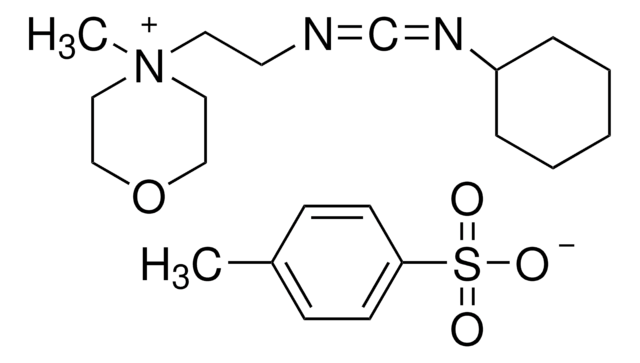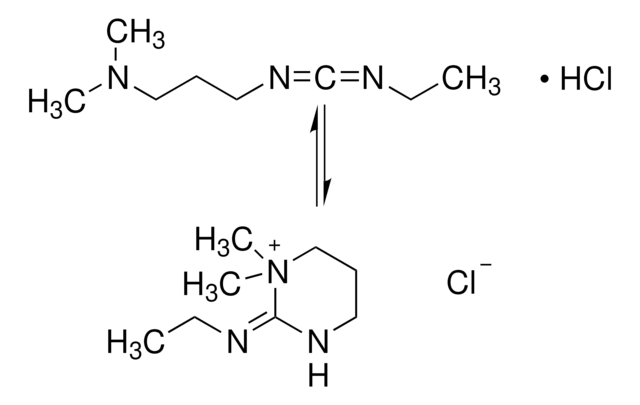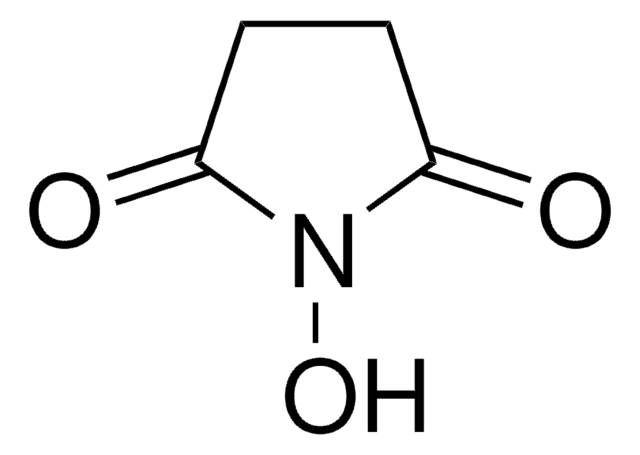C1011
N-Cyclohexyl-N′-(2-morpholinoethyl)carbodiimide metho-p-toluenesulfonate
≥97% (CHN)
Synonym(s):
N-Cyclohexyl-N′-(β-[N-methylmorpholino]ethyl)carbodiimide p-toluenesulfonate, CMC, CME-CDI
About This Item
Recommended Products
Assay
≥97% (CHN)
form
powder
technique(s)
ligand binding assay: suitable
color
white
mp
109-111 °C
application(s)
peptide synthesis
storage temp.
−20°C
SMILES string
Cc1ccc(cc1)S([O-])(=O)=O.C[N+]2(CCOCC2)CCN=C=NC3CCCCC3
InChI
1S/C14H26N3O.C7H8O3S/c1-17(9-11-18-12-10-17)8-7-15-13-16-14-5-3-2-4-6-14;1-6-2-4-7(5-3-6)11(8,9)10/h14H,2-12H2,1H3;2-5H,1H3,(H,8,9,10)/q+1;/p-1
InChI key
GBCAVSYHPPARHX-UHFFFAOYSA-M
Looking for similar products? Visit Product Comparison Guide
Application
Biochem/physiol Actions
Storage Class Code
13 - Non Combustible Solids
WGK
WGK 3
Flash Point(F)
Not applicable
Flash Point(C)
Not applicable
Personal Protective Equipment
Regulatory Information
Choose from one of the most recent versions:
Already Own This Product?
Find documentation for the products that you have recently purchased in the Document Library.
Our team of scientists has experience in all areas of research including Life Science, Material Science, Chemical Synthesis, Chromatography, Analytical and many others.
Contact Technical Service




![1-[3-(Dimethylamino)propyl]-3-ethylcarbodiimide methiodide](/deepweb/assets/sigmaaldrich/product/structures/414/134/4eb9c126-d7f9-4e12-9e3a-95cb077824fd/640/4eb9c126-d7f9-4e12-9e3a-95cb077824fd.png)

